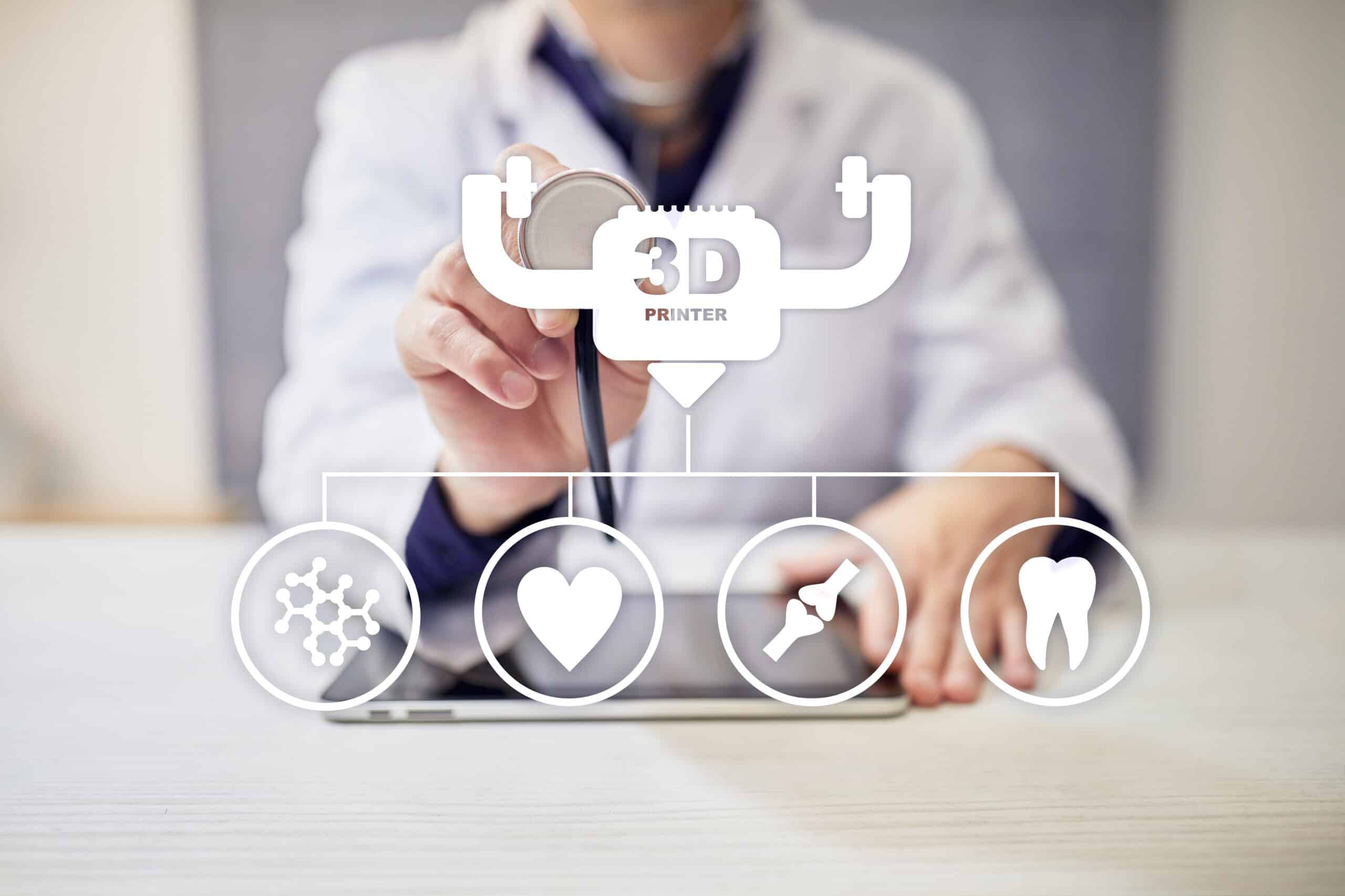In fact, there’s a good chance that what we believed as science fiction will be our reality in the next 5 years. Experts are already predicting that 3D printing on demand will have a transformative effect on the healthcare industry; it will help move us more towards personalized medicine. And it’s easy to see why they think so. For several years now, doctors have been using 3D printed models of organs to learn about conditions and diseases before handling the real thing. In addition, these phantom models are used by surgeons to plan complex procedures that can increase the surgery’s chances of success.
Other important innovations brought about by additive manufacturing include affordable prosthetics, orthopedic implants, and 3D-printed customized surgical tools. But those are just the tip of the iceberg.
Bioprinting
Bioprinting is an additive manufacturing process that utilizes 3D printing-like techniques to create organ-like structures using cells, growth factors, and biomaterials. To put it more simply, bioprinting is like 3D printing but for organs. Take note that these biomedical parts aren’t real organs; they just imitate natural tissues and provide cells the “scaffolding” they need to grow on as well as nutriment to survive.
While bioprinting organs for transplant isn’t something that we can expect in the next 5 years, there are other applications of this technology that we can look forward to. One is the use of “organoids” or tiny biomedical parts that mimic real organs in medical research. It will significantly lower the need for animal trials. It can help test treatments for diseases, side effects of drugs, etc. Scientists are already printing strips of liver tissue. It won’t be long before this becomes a reality.
Personalized Pharmaceuticals
Speaking of drugs, 3D printing has opened up the opportunity to create customized dosages. What does that mean? Patients are not all the same. When companies manufacture drugs, specifically oral tablets, they typically mill and mix the ingredients before using compression or a mold. This type of process makes it difficult to tailor their dosages according to a patient’s genetic profile and other individual factors. 3D printing can help pharmaceutical companies to create personalized medicine at a lower cost, instead of creating one-size-fits-all treatments.
That’s not all. Another innovation that is coming our way is the polypill. Individuals who suffer from a number of conditions drink multiple pills each day. Most often, the medication needs to be taken at a certain time during the day. So, it’s not unusual for some patients to forget taking a pill or two due to the hustle and bustle of daily life. But what if it’s possible to take only one pill each day? A pill that contains all your medications in the right dosage to be released only at the right time of day. Enter the polypill.
Typically, a pill will release drugs into your body when its outer shell is dissolved in your digestive system. A polypill can be designed to feature multiple layers with different medications in between. When the first layer dissolves, the first drug is released and the next layer is exposed. When that one dissolves, a different drug is released. And so it continues until the entire pill has dissolved. Not only is it possible to have multiple drugs released in the body, but it is also possible to time the release of the drugs using layers that dissolve at different rates.
Before you say that this is science fiction, polypills are actually being used today to treat patients with type 2 diabetes, heart conditions, and hypertension. However, as we’ve said, patients are not all the same. And manufacturing polypills with customized dosages is not cost-effective. At least, it didn’t use to be. 3D printing can drastically reduce the manufacturing of polypills. And this possibility isn’t far off in our future. The FDA has already approved the use of a 3D-printed pill. In 5 years, you may be able to buy customized polypills at your local pharmacy.
Surgery Rehearsals
This is not something new. There have been a number of cases where 3D-printed models of a patient’s specific anatomy have been used to help surgeons plan and rehearse a surgery before performing the real thing on the patient. Some surgeons in Japan, for example, used a 3D-printed model of a liver to plan liver transplantations that will result in minimal tissue loss. Studies have shown that rehearsals using 3D-printed models enabled surgeons to complete the procedure more quickly and reduce the trauma to the patient. Pretty soon, using 3D-printed anatomical models won’t be limited to a number of cases. Instead, it will become the norm.




